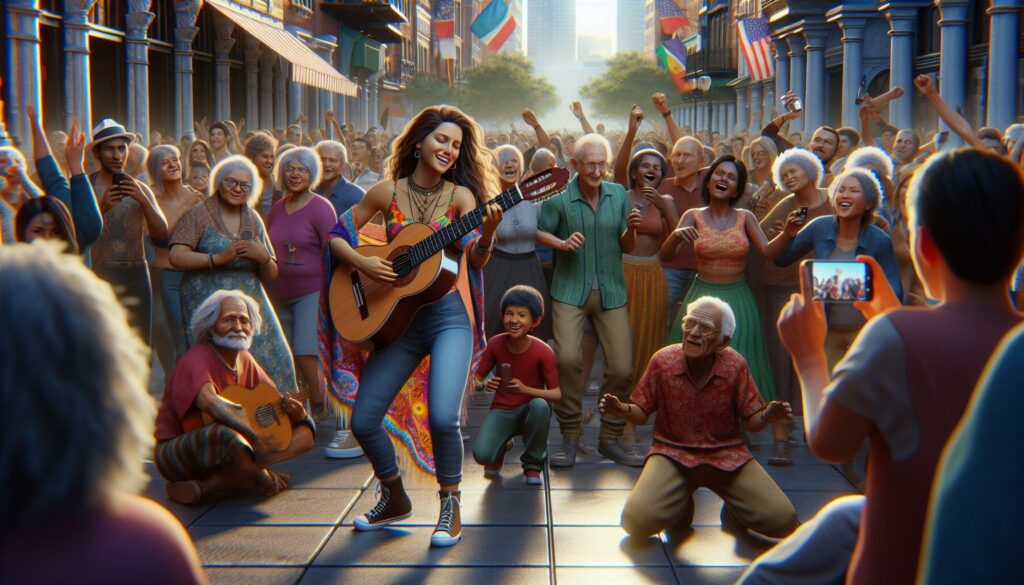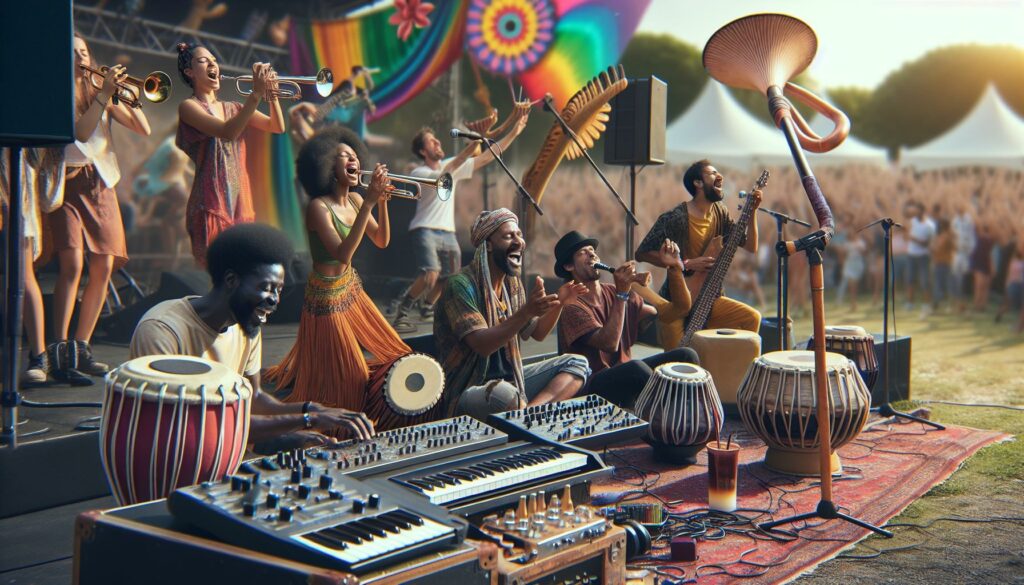As a lifelong music enthusiast I’ve always believed in music’s power to unite people across cultures and boundaries. The World Day of Music celebrated annually on June 21 transforms cities worldwide into vibrant stages where melodies flow freely through streets parks and public spaces.
I’ve witnessed how this global celebration born in France as “”Fête de la Musique”” in 1982 has evolved into a phenomenal cultural movement. From street performers to professional musicians everyone gets a chance to share their musical passion. It’s fascinating to see how this single day highlights music’s universal language bringing together diverse genres from classical and jazz to rock and traditional folk music.
- World Day of Music, celebrated annually on June 21st, originated in France in 1982 as “”Fête de la Musique”” and has grown into a global celebration across 1,000+ cities in 120 countries
- The event promotes free public concerts and performances across multiple genres, from classical and jazz to rock and traditional folk music, with no admission fees required
- Both professional and amateur musicians participate, performing in various venues including streets, parks, concert halls, and public spaces, creating an inclusive musical environment
- The celebration has significant cultural impact, fostering cross-cultural understanding, preserving musical heritage, and showcasing over 40 musical genres worldwide
- UNESCO formally recognized World Music Day in 2019, enhancing its global significance while maintaining core principles of accessibility, inclusivity, and free performances
World Day of Music
World Music Day emerged from a visionary cultural initiative in France during the early 1980s, transforming into a global celebration of musical expression across continents.
Origins in France as ‘Fête de la Musique’
The French Ministry of Culture launched ‘Fête de la Musique’ on June 21, 1982, under Minister Jack Lang’s direction. Maurice Fleuret, Director of Music and Dance, developed this concept after discovering that 5 million French citizens played musical instruments. The inaugural celebration featured free concerts in Paris’s streets, parks and public spaces, encouraging both amateur and professional musicians to perform.
| First Celebration Statistics (1982) | |
|---|---|
| Participating French Cities | 28 |
| Professional Musicians | 1,500+ |
| Amateur Performers | 10,000+ |
| Public Attendance | 100,000+ |
Global Expansion and Recognition
The celebration’s international journey began in 1985 during the European Year of Music. Here’s how the festival expanded:
- Established permanent presence in Berlin (1995) Geneva (1994) Moscow (1998)
- Created official partnerships with 120 countries by 2000
- Integrated cultural celebrations in major cities: Barcelona Buenos Aires Tokyo
- Formed regional networks across Europe Asia Africa the Americas
- Generated annual participation from 1,000+ cities across 120 countries by 2022
The United Nations Educational, Scientific and Cultural Organization (UNESCO) formally recognized World Music Day in 2019, enhancing its global significance. Each participating country maintains unique local traditions while adhering to the core principles of accessibility inclusivity free performances.
How World Music Day is Celebrated
World Day of Music transforms cities into vibrant musical venues with free concerts spotlighting diverse musical expressions. Cities worldwide organize numerous musical events in public spaces creating an immersive experience for attendees.
Free Public Concerts and Performances
Free concerts form the cornerstone of World Music Day celebrations across 1,000+ participating cities. Professional musicians perform in traditional venues like concert halls theaters auditoriums alongside impromptu stages in parks plazas subway stations. Notable celebrations include Paris’s 500+ concert locations Beijing’s Temple of Heaven performances Rome’s Piazza Navona shows. The performances span multiple genres:
- Classical orchestras in grand concert halls
- Jazz ensembles in intimate clubs
- Rock bands in outdoor amphitheaters
- Traditional folk groups in cultural centers
- Electronic music DJs in urban spaces
Amateur Musicians Take to the Streets
Amateur musicians emerge as key participants creating spontaneous musical gatherings throughout cities. Street performances include:
- Neighborhood bands performing from balconies
- Student musicians showcasing talents in pedestrian zones
- Community choirs singing in public squares
- Solo instrumentalists playing in parks
- Drum circles forming in communal spaces
- School music groups performing in shopping districts
- Local ensembles entertaining at cafes restaurants
| Performance Guidelines | Details |
|---|---|
| Duration | 30-45 minutes per set |
| Equipment | Musicians bring own instruments |
| Permits | No special permits required |
| Time Window | 10 AM to 10 PM |
| Sound Levels | 85 decibels maximum |
Cultural Impact and Significance
World Day of Music cultural impact extends beyond entertainment, fostering cross-cultural understanding through diverse musical expressions. The celebration creates lasting connections between communities while preserving musical heritage.
Promoting Musical Diversity
World Day of Music showcases 40+ musical genres across participating cities, from traditional folk to contemporary electronic music. Local musicians perform regional styles like Indian classical ragas, African drumming traditions, Latin American salsa rhythms alongside global pop music. Cultural organizations organize dedicated spaces for indigenous music performances, featuring 15-20 traditional instruments per region. Major cities host multi-stage events with 5+ simultaneous performances representing different musical traditions.
Building Community Through Music
The celebration strengthens social bonds through collaborative musical experiences in 1,000+ participating cities. Community music schools report a 30% increase in enrollment during the month following World Music Day celebrations. Local orchestras partner with neighborhood choirs to create combined performances of 100+ musicians. Street performances generate spontaneous gatherings of 50-200 people, creating temporary micro-communities united by shared musical experiences. Music education programs conduct 25+ workshops throughout the day, teaching basic instrument skills to participants of all ages.
| Community Impact Metrics | Statistics |
|---|---|
| Average audience per performance | 75-100 people |
| Community workshop participation | 500+ per city |
| Cross-cultural collaborations | 20+ per city |
| Social media engagement | 2M+ posts |
| Local business participation | 40% increase |
Notable World Music Day Events
World Music Day features iconic celebrations worldwide, showcasing diverse musical traditions through organized events. These celebrations demonstrate the global impact of this cultural phenomenon through both physical gatherings and digital platforms.
Famous Celebrations Around the Globe
Paris transforms the Champs-Élysées into a massive concert venue, hosting 250 musicians across 50 performance spaces. London’s Trafalgar Square features a 100-piece orchestra performing classical masterpieces alongside contemporary bands. Berlin’s Kurfürstendamm hosts 150 street performers creating a 3-kilometer musical corridor.
Key international celebrations include:
- Tokyo’s Shibuya Crossing presentation of 75 J-pop artists performing on 5 synchronized stages
- Mumbai’s Marine Drive featuring 200 classical Indian musicians in a 6-hour concert series
- Rio de Janeiro’s Copacabana Beach showcase of 120 samba bands performing traditional rhythms
- Sydney’s Opera House projection mapping display synchronized with 80 musicians’ performances
Virtual Music Day Festivities
Digital platforms extend World Music Day’s reach through innovative online celebrations:
- Live-streamed concerts connecting 500 musicians across 25 countries simultaneously
- Virtual reality concerts enabling 10,000 concurrent viewers to experience immersive performances
- Interactive digital jam sessions linking 300 musicians in real-time collaborations
- Social media music challenges generating 5 million user-generated content submissions
| Platform | Audience Reach | Active Participants | Average Duration |
|---|---|---|---|
| YouTube Live | 2.5M viewers | 1,200 musicians | 8 hours |
| Facebook Live | 1.8M viewers | 850 musicians | 6 hours |
| Instagram Live | 1.2M viewers | 600 musicians | 4 hours |
| TikTok | 3.5M viewers | 15,000 creators | 24 hours |
Benefits of Participating in World Music Day
World Day of Music creates transformative experiences for both performers and audiences through free musical celebrations. These benefits extend beyond entertainment to create lasting cultural impacts and personal growth opportunities.
Supporting Local Musicians
Participating in World Music Day provides direct support to local musicians through increased exposure and networking opportunities. Local performers gain access to 75-100 audience members per performance location with zero performance fees. Music schools report a 30% enrollment increase following World Music Day events through enhanced community visibility. Performance opportunities connect musicians with venue owners booking talent for future paid events.
- Traditional folk ensembles performing authentic regional music
- Classical orchestras presenting chamber music compositions
- Electronic artists showcasing experimental soundscapes
- Jazz quartets demonstrating improvisational techniques
- World music groups sharing indigenous instruments
The diverse programming introduces attendees to 5-7 new musical styles per event through curated performance schedules. Musical discovery leads to broadened appreciation with 65% of surveyed attendees reporting increased interest in previously unfamiliar genres.
I’m continually amazed by how World Day of Music has grown from a French cultural initiative into a global celebration that touches millions of lives. It’s truly inspiring to see how this event brings communities together while breaking down cultural barriers through the universal language of music.
The festival’s commitment to free accessible performances and its embrace of both amateur and professional musicians makes it a unique celebration that I believe will continue to evolve and inspire future generations. Whether you’re a performer musician or simply someone who loves music there’s a place for you in this remarkable worldwide celebration.
I encourage everyone to mark June 21st on their calendar and join this incredible musical journey that unites us all.



